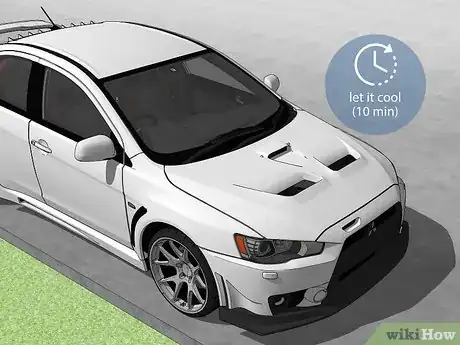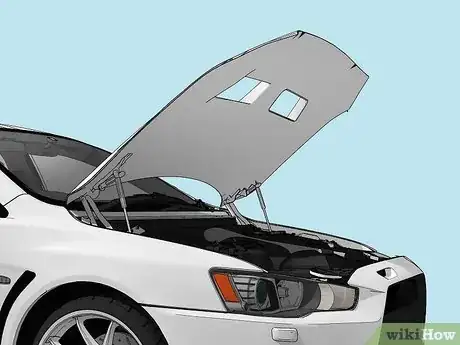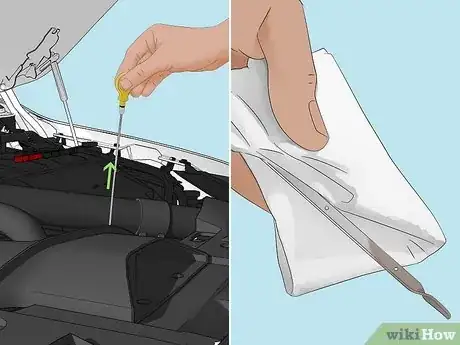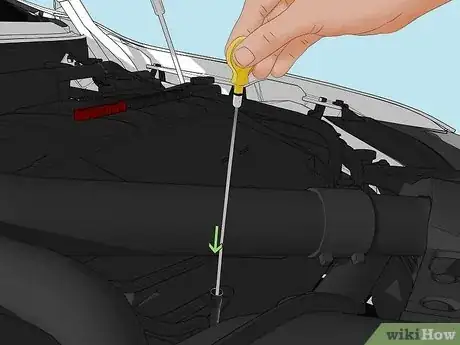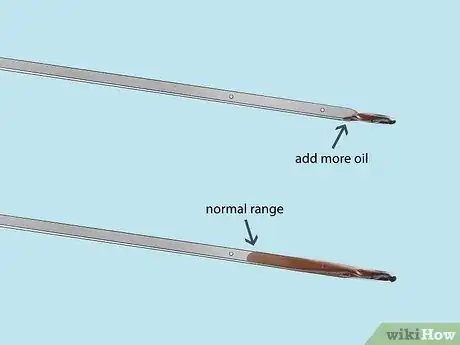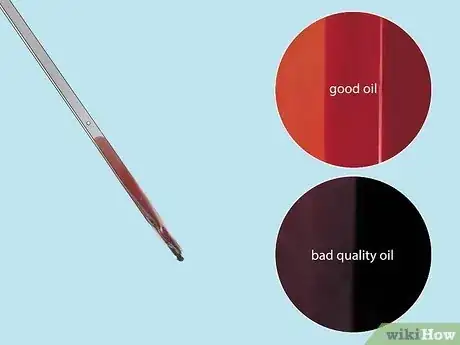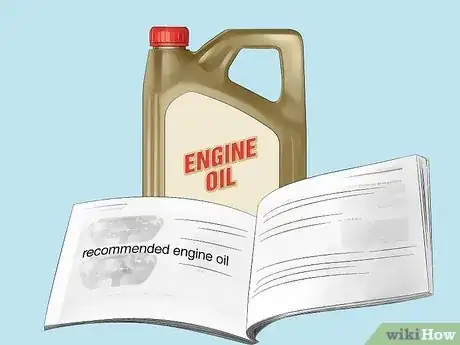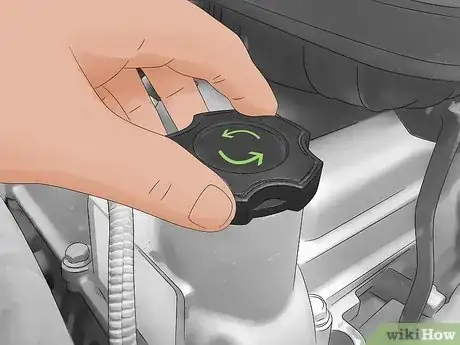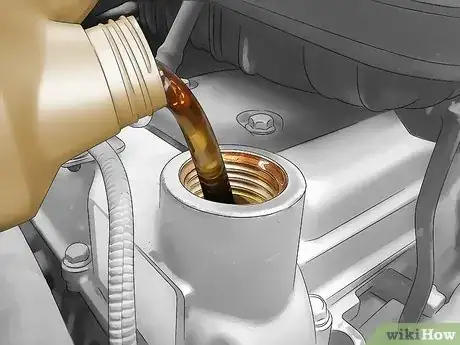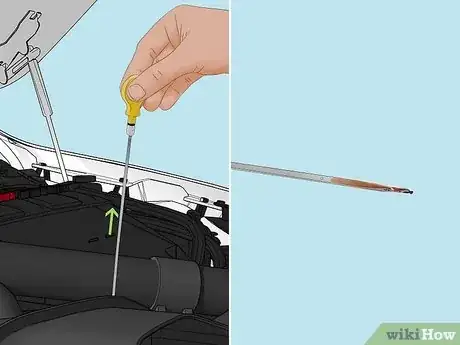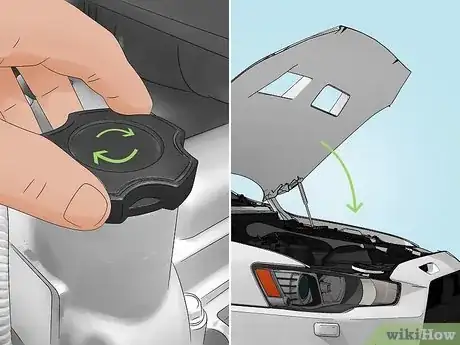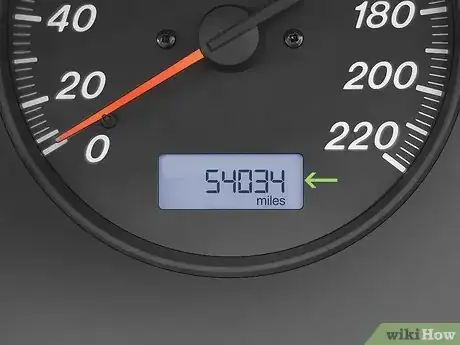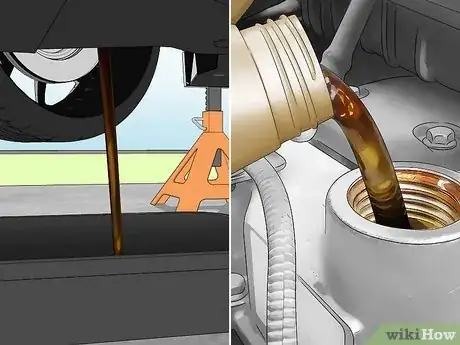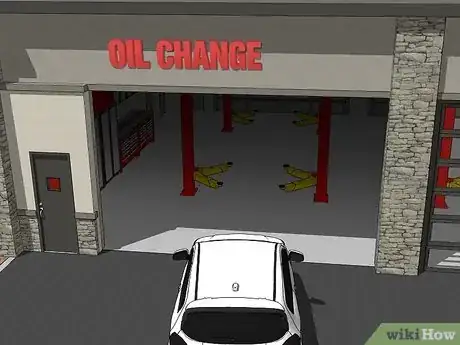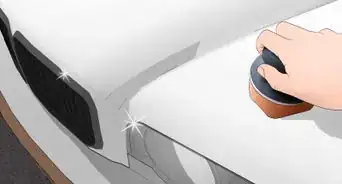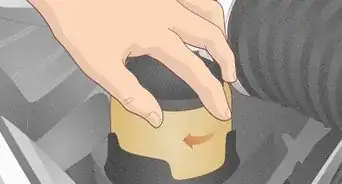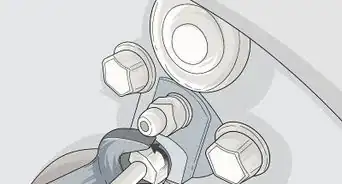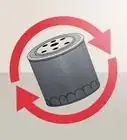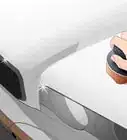This article was co-authored by Rocco Lovetere. Rocco Lovetere is the Owner and a Master Mechanic at Rocco's Mobile Auto Repair in California. With over 20 years of experience, he specializes in Honda, Acura, Toyota, Nissan, Infiniti, and Volvo cars. He is an ASE Certified Automotive technician and has worked in automotive repair since 1999.
There are 12 references cited in this article, which can be found at the bottom of the page.
wikiHow marks an article as reader-approved once it receives enough positive feedback. In this case, 100% of readers who voted found the article helpful, earning it our reader-approved status.
This article has been viewed 175,330 times.
Periodically checking to make sure your car has enough motor oil is the best way to keep your engine running well for a long time to come. Motor oil is the lubricant between the moving engine parts; if the level is too low, the parts will wear quickly and increase likelihood of engine seizure. Learn how to check your oil to keep this from happening.
Steps
Checking to See if Your Car Needs Oil
-
1Make sure the engine isn't hot. You can burn yourself if you handle engine parts right after you turn off your car. Wait at least 10 minutes or plan to check your oil while the engine is cold.[1]
- A cool engine ensures that the oil enough time to settle at the bottom of the oil pan and will give you a more accurate reading of how much oil is in the car.
-
2Open the hood. Most cars have an interior hood-popping lever located under the steering column.[2] Pull the lever, then walk to the front of your car and unlatch the hood. Raise the hood so that it is completely open, and prop it up with a metal prop if your car has one.[3]
- In a small number of cars (such as the Mini Cooper) the hood release on the passenger side.
- Make sure the vehicle is on a flat and level surface or the dipstick will provide an inaccurate reading. This is done best at a gas station where the surface is flat and even.
Advertisement -
3Pull out the dipstick and wipe it off with a clean rag. The dipstick is connected to the oil tank in your engine, and is used to determine how much oil is still in the oil tank. When the car is in motion the oil splashes around and covers the entire stick. To check your oil level you need to start with a clean stick.[4]
- The dipstick is often located near the front of the engine. When you locate it, give it a tug; it should pull out smoothly.
- Take care not to pull out the transmission fluid dipstick. If you're not sure which dipstick is connected to the oil tank, check the user manual that came with your car, or ask a gas station attendant for help.
-
4Reinsert the dipstick. Carefully place the dipstick back into the pipe connected to the oil tank. Push it all the way down until it is completely reinserted. If it gets rattled or caught along the way, pull it back out, wipe it off, and try again.[5]
-
5Remove the dipstick a second time to gauge the oil level. Look at the end of the dipstick to see where the oil's film ends. The end of the stick will have the word "ADD" toward the end, and "FULL" toward the middle.[6]
- If the oil film reaches up to or below the ADD line, it's time to add more oil.
- If the oil film is close to the FULL line, you don't have to add more oil quite yet.
-
6Determine whether the oil needs to be changed. In addition to checking the quantity of the oil, you should also check the quality. The oil should look clean and smooth. If the oil looks like it contains debris or looks cloudy, it needs to be changed.[7]
Adding Oil to Your Engine
-
1
-
2Unscrew the oil cap. You don't pour oil down the same pip where the dipstick is located; instead, unscrew the cap located a few inches away.[10]
-
3Pour in the oil. If your oil was very low, pour in the entire quart. You can use a funnel if you wish, or just pour it directly from the bottle into the tank.[11]
-
4Check the oil again. Go ahead and pull out the dipstick, wipe it with a rag, reinsert it, and check the oil level to make sure the car now has enough oil. It should now come up to the FULL line.[12]
-
5Replace the cap and close the hood. Screw the cap back on tightly, lower the hood and make sure it is firmly closed before starting your engine.
Changing Your Engine Oil
-
1Know how often to change your oil. How often you need to change your oil depends on the type of car you own. Some cars need an oil change every 3,000 miles (4,800 km), while others can go up to 10,000 or even 15,000 miles (24,000 km) without an oil change. Research your car and talk to the manufacturer or your mechanic to determine how often your oil should be changed.[13]
-
2Change your own oil. Changing your car's oil can save you between $25 and $75 dollars. If you don't have an aptitude for working on cars, there's no reason why you can't do it yourself. Make sure you have the right oil and tools before you begin.[14]
-
3Hire someone to change your oil. Most people take their car to a garage to have the oil changed. Simply drive up to an "oil and lube" facility and let the mechanic there know that your oil needs to be changed. The service usually takes about half an hour and is done by a mechanic while you wait in the lobby.
Warnings
- If your oil light illuminates on the dash, this is a sign that your engine has dangerously low levels of oil. In most cases, the oil light is for oil pressure. If the oil light starts to flicker or comes on it's an indication of low oil pressure. This can be due to low oil or a failing oil pump. Refill immediately.⧼thumbs_response⧽
- Make sure your engine has completely cooled before attempting to check your oil⧼thumbs_response⧽
Things You'll Need
- Old, clean rag or paper towel
- The proper oil for your vehicle
- Flat surface
- Cool engine
References
- ↑ https://www.consumerreports.org/car-repair-maintenance/how-to-check-car-engine-oil/
- ↑ https://driving-tests.org/beginner-drivers/how-to-check-your-oil/
- ↑ https://www.dummies.com/home-garden/car-repair/how-to-raise-your-vehicles-hood/
- ↑ https://www.dummies.com/home-garden/car-repair/how-to-check-your-vehicles-oil-level/
- ↑ https://www.consumerreports.org/car-repair-maintenance/how-to-check-car-engine-oil/
- ↑ https://www.consumerreports.org/car-repair-maintenance/how-to-check-car-engine-oil/
- ↑ https://www.machinerylubrication.com/Read/31108/oil-color-change
- ↑ https://www.popularmechanics.com/cars/car-technology/a53/what-oil-does-my-car-take/
- ↑ https://www.consumerreports.org/cro/news/2015/07/how-to-tell-what-kind-of-oil-your-car-needs/index.htm
- ↑ https://www.lubricants.total.com/how-top-your-oil
- ↑ https://www.lubricants.total.com/how-top-your-oil
- ↑ https://www.youtube.com/watch?v=zmwLj1pnreg
- ↑ https://www.consumerreports.org/car-maintenance/things-to-know-about-oil-changes-for-your-car/
- ↑ https://www.familyhandyman.com/automotive/diy-oil-change/diy-car-maintenance-how-to-change-your-car-oil-yourself/
- http://www.dmv.org/how-to-guides/change-oil.php
About This Article
Checking your oil is a quick way to keep your engine running smoothly without any tools or spending any money. Before you check your oil, wait at least 10 minutes after you’ve turned the engine off so your car can cool down and you don’t burn yourself. Then, open your hood and pull out the dipstick, which is connected to the oil tank in your engine. Clean the dipstick with a cloth to remove any oil, then reinsert it into the pipe of the oil tank. Make sure to push it all the way in to get an accurate reading. Pull the stick back out a second time and look at where the oil’s film ends. If the oil film reaches up to or below where the stick says “ADD,” you need to add more oil. If the oil film is close to the “FULL” mark, you don’t need to add more oil yet. To learn how to add new oil to your car, read more from our Mechanic co-author!
